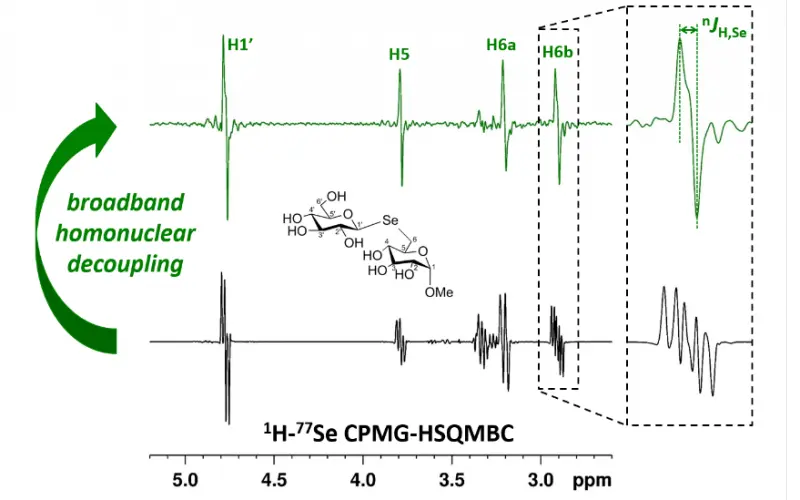
Multiple-bond heteronuclear coupling constants (nJXH) are invaluable and widely applied tools for structure elucidation and conformational analysis of synthetic organic compounds and natural products. These parameters well complement the information gained from proton-proton coupling constants and NOE data. Determination of heteronuclear multiple-bond couplings remains, however, a challenging task due to the low sensitivity of the relevant correlation experiments, and also to the fact that long-range heteronuclear (nJXH) and proton-proton coupling constants (2,3JHH) are typically the same order of magnitude. We inserted Zangger-Sterk (ZS)- and PSYCHE-type pulse sequence elements into the CPMG-HSQMBC experiment before the proton detection period to remove the undesired splittings caused by proton-proton couplings from the detected signals. As a result, the determination of long-range heteronuclear coupling constants was simplified to measure frequency differences between singlet maxima even in the case of molecules with complex proton-proton coupling network.
I. Timári and K. E. Kövér:
Broadband homonuclear decoupled HSQMBC methods
Magn. Reson. Chem., 2018, 56, 910-917.
I. Timári, L. Szilágyi and K. E. Kövér:
Chem. Eur. J., 2015, 21, 13939-13942.
I. Timári, T. Z. Illyés, R. W. Adams, M. Nilsson, L. Szilágyi, G. A. Morris and K. E. Kövér:
Chem. Eur. J., 2015, 21, 3472-3479.